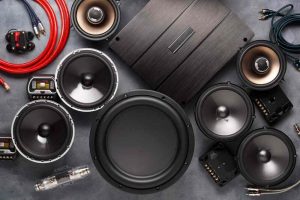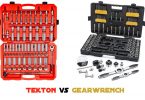If you’re thinking of getting a major upgrade for your vehicle, consider buying a new set of speakers. The default factory speakers in your car might not be enough unless you’re fine with the average sound quality.
But which ones should you buy? Which brand, what size? The overwhelming number of brands of speakers found in the stores may confuse you. So here’s a guide to buying the perfect set of speakers for your car.
How to Measure Car Speaker Sizes

First of all, you need to do some browsing and measuring. So get that measuring tape you have in your drawer and determine the sizes in inches. There are five basic stuff you need to measure-
Speaker Diameter
As we all have studied in elementary school, diameter is the length from one end of a circle through the center to another end. Similarly, a speaker diameter is the length of one end of the round shape to the other. There are some standard speaker diameters.
- 5-inch
- 5.25-inch
- 5X7 inches
- 6.5-inch
- 6X9 inches
- 3.5-inch
- 4-inch
- 4X6 inches
- 4X10 inches
- 6X8 inches
Now, the 6.5 is the most commonly used one that also offers you an easier configuration. It is ideal for several types of customization too. The overall speaker sizes don’t usually matter too much. So if your speaker is 6.4 inches, you honestly don’t need to freak out.
Another essential is the cutout diameter. This is the mounting space size of your speakers. You have to determine the breadth of the basket below the speaker flange.
Mounting Depth
The Mounting depth and mounting space are not the same things. People often confuse these two. The mounting depth is the distance underneath the speaker flange to the base of the speaker’s magnet.
You need to measure the mounting depth as carefully as possible. This way, your shiny new speakers won’t be bumping into the inner part of the car. If that happens, this would surely distort the sound and cause rattling. Over time, your car speakers would slowly be deteriorating.
Mounting Height
To determine this, measure the distance between the bottom of the flange to the highest point of the speaker. If you know this, your speakers won’t be bumping into grills and won’t experience damage. Now, have your spacer ready for the tweeters sticking out to the sides.
Mounting Screw Width
This is not compulsory but having all the possible measurements will put you on a safer side. For this, you can either measure the screw width or drill a hole to best accommodate your new speakers. Speakers usually have extended mounting holes so you won’t have to drill holes yourself.
Installation Space
On the door panels of your vehicle, back rear and front-rear, there are slots where you can install your speakers. Of course, you can measure those slots as well. This would give you an idea of the size of speakers that fit into them.
Alternate Methods
Suppose you are unable or unwilling to measure the proper dimensions of your car’s original speakers. There are other methods of measurements you can choose.
Speaker Brackets
Need suggestions for your speaker sizes? Go check out the speaker brackets yourself. You can see if they have markers that show the speaker measurements that they can accommodate.
Sadly, not all car models have this unique, interesting feature. So if you don’t find these markers on your car, you need to work with other features that might be helpful in this case.
The Car Manual
That great big book that came along with your car? Yes, that one you had to read when you bought your car and looked at several times since then. That manual has different sections that contain useful info.
So go to the audio system’s section and look over to the OEM speaker size. You’ll find the size as well as additional instructions to find what you’re searching for. Just in case you had lost the car manual, feel free to request one from the dealer or go online.
Still Confused?
Now, what if you couldn’t follow any of these instructions? You’re totally at a loss and just don’t want to go through this hassle. Then try some other methods.
Ask an expert
This is the safest possible option and no need to use your brains to dig into it. If you want the right speakers for your car, seek out a professional and they can take a look at your vehicle. It would be cheaper and more convenient if you buy from a place and have them install it for you. Some stores charge higher to install speakers bought from other stores.
Manufacturers
If you’re still in doubt, contact the manufacturers of the speakers that you find attractive. They can provide you with additional knowledge. You can have at least some sort of idea even if you do plan on taking a risk.
The Internet
Surfing the internet is something most of us do daily. From cool DIY craft ideas to things like how the car engine works, you can find everything. Several different websites can help you find suitable speakers for your car. Some even have compatibility guides where you can enter your vehicle’s info and get useful suggestions.
Other Considerations
However, size is not the only thing that matters. When it comes to car speakers, the next step after determining the size is to consider the following things.
Product Materials
The sound quality and durability depend a lot on the materials used to manufacture the speakers. For woofers and subwoofers, ceramic, wood, and woven fabrics work best. These can generate loud, natural bass and are extremely resilient. However, if you want the best sound and the most durable product, go for rubber surrounds. Nowadays, it is a common practice by manufacturers to use materials like paper and foam in their lower-end speakers. So be careful and do your best to avoid such items as these materials decay fast.
Weight of the Speakers
This sounds like an unconvincing factor but the weight of a speaker matters to a significant degree. If you are installing it on a car’s door panel, make sure the panel can bear the weight of the speaker you plan to incorporate.
Power Output
The amount of power that a speaker can handle at a stretch is measured as RMS. The stock car stereos’ power output is around 15W RMS per channel. If you plan to revamp the entire sound system of your car, your new speakers must be compatible with the power output of the new stereo.
Woofer Quality
For people who want a little extra bang in their bass, find a woofer with light, preferably fabric materials. One of the best options is polypropylene that will provide a much deeper bass response from your subs.
Conclusion
So the bottom line is, speakers have to be compatible with your car. If it is not your area of expertise, then the best option would be to ask experts or ask the internet. If you can get it done all by yourself, then that is great. But whatever you buy, it should fulfill your expectations in terms of quality. Moreover, it should reflect your taste and suit the image of your vehicle.
FAQ’s:
1. What are the best speakers for a car?
There is no definite answer for this. Any model of any brand that catches your eyes and your car can accommodate is suitable. Also, it would be best if it has the sound quality you desire.
2. How much does it cost to get speakers installed in your car?
The installation cost for car speakers depends on manufacturers, hired experts, the speaker types, the models and the level of difficulty. For example, in the case of component speakers, the drivers and other elements need to be installed in different locations of the car. Unlike full-range speakers, it’s a complicated process that requires calling in an expert.
3. How many speakers does a car have?
Mainly two- woofers and tweeters. Depending on the types and the owners, subwoofers, super tweeters, mid-bass, and mid-range are added to enhance sound clarity.
4. Does Speaker size affect the sound?
Yes, it does. For example, woofers need to be of a specific size as they deal with lower frequency sounds with bigger wavelengths. But tweeters, handling higher frequency sounds with smaller wavelengths, require a smaller volume. If a speaker doesn’t have enough space for the frequencies it has been programmed to deal with, you won’t be able to get the sound with accurate details.










Leave a Comment